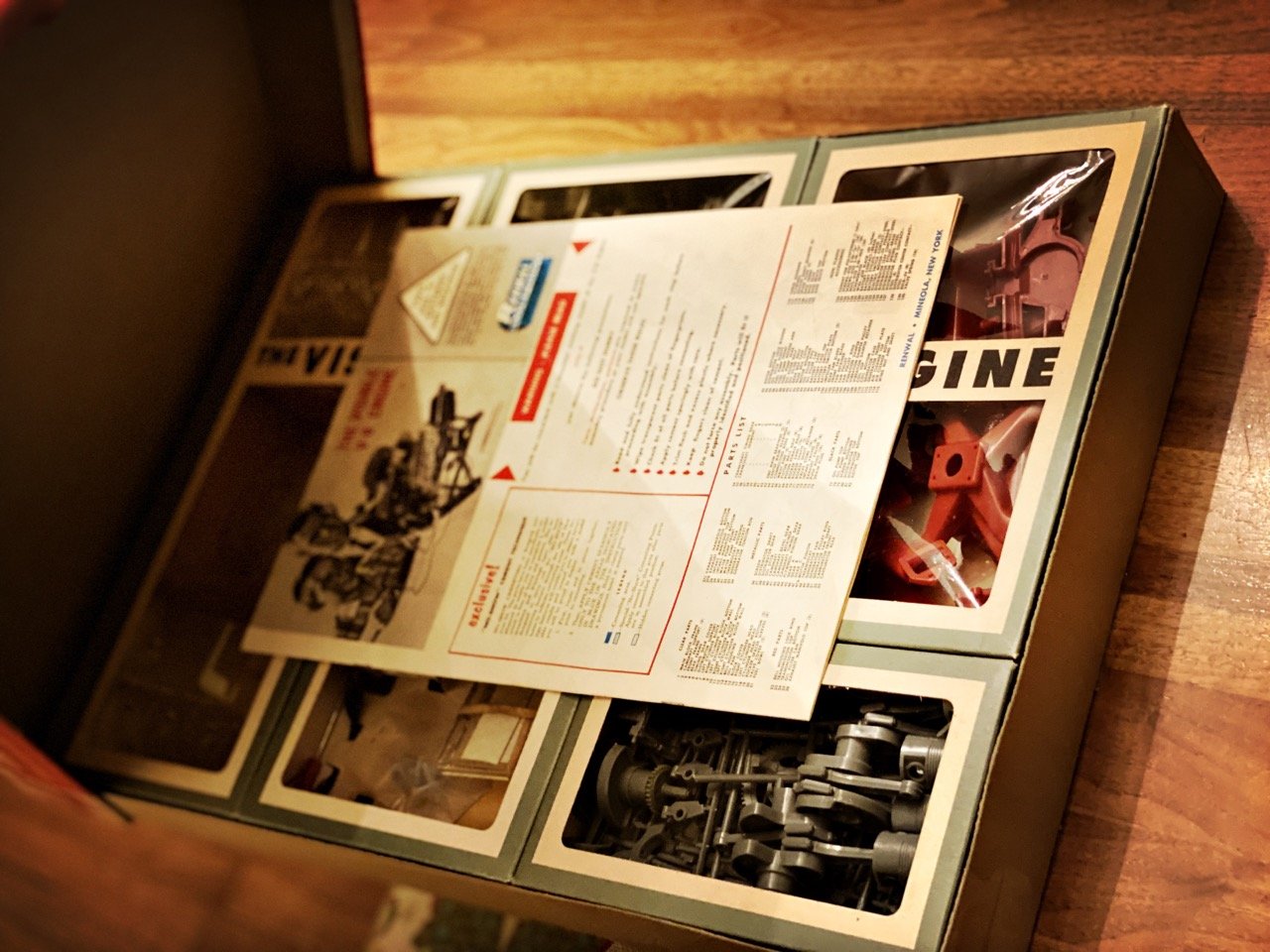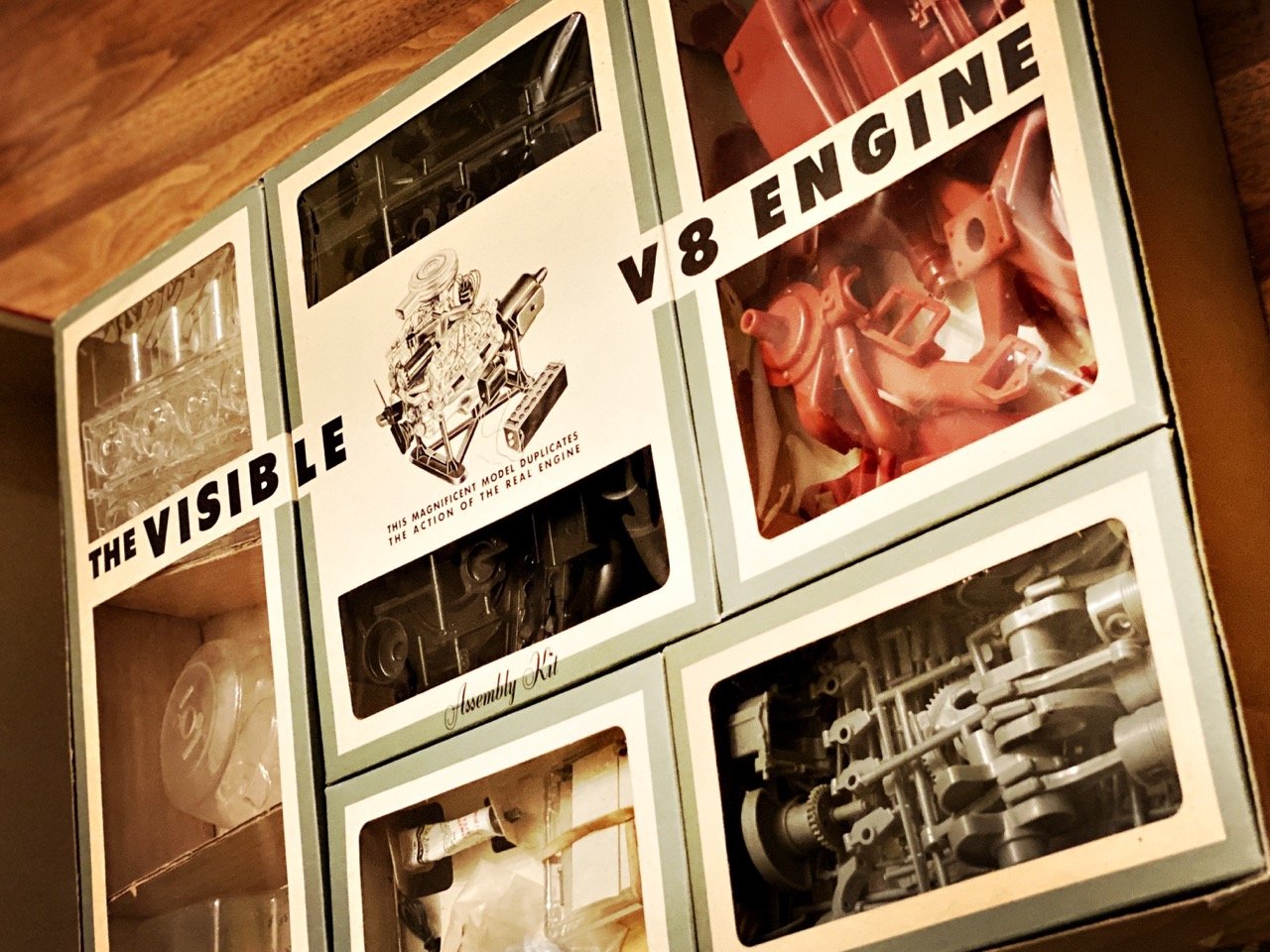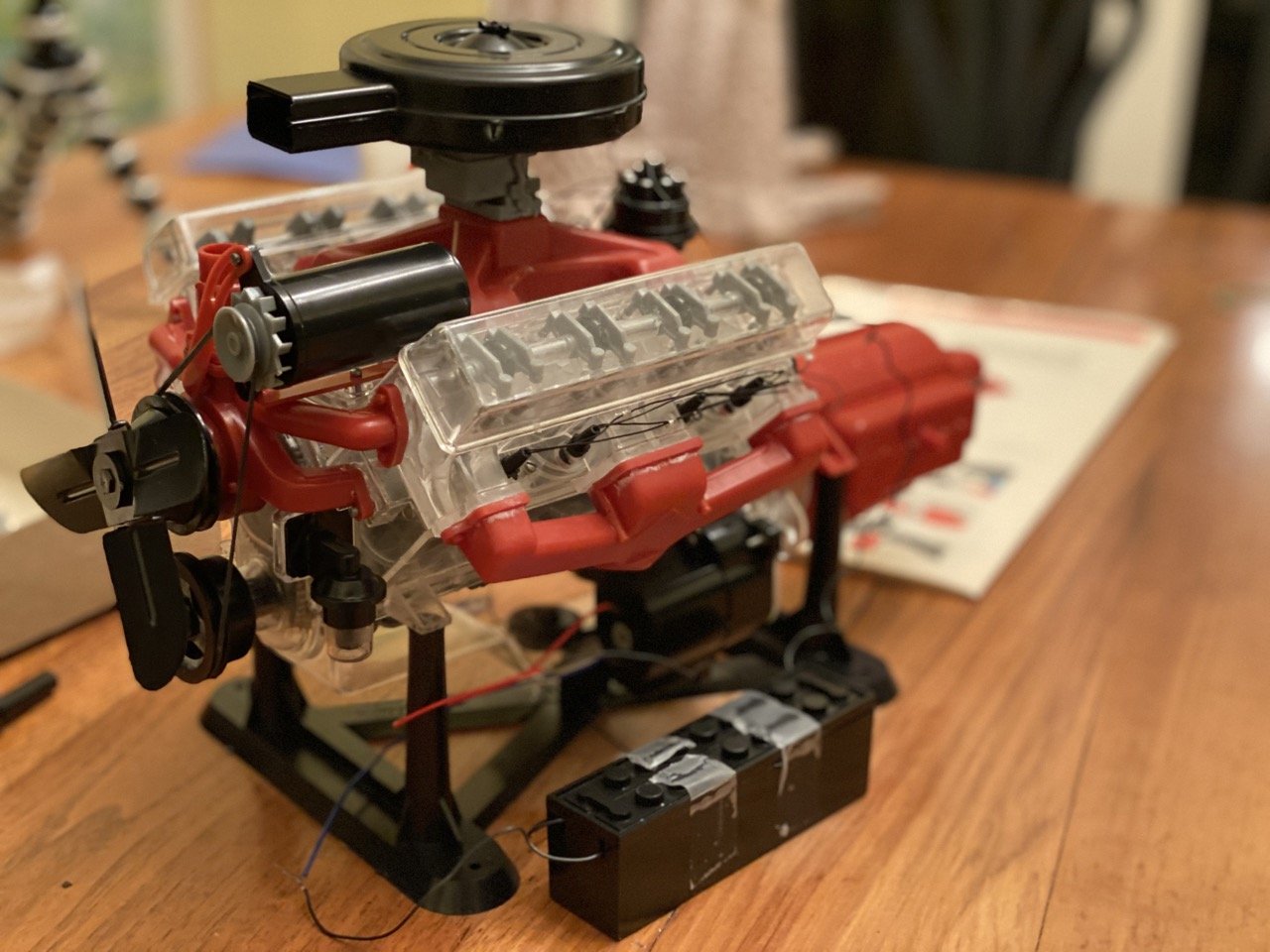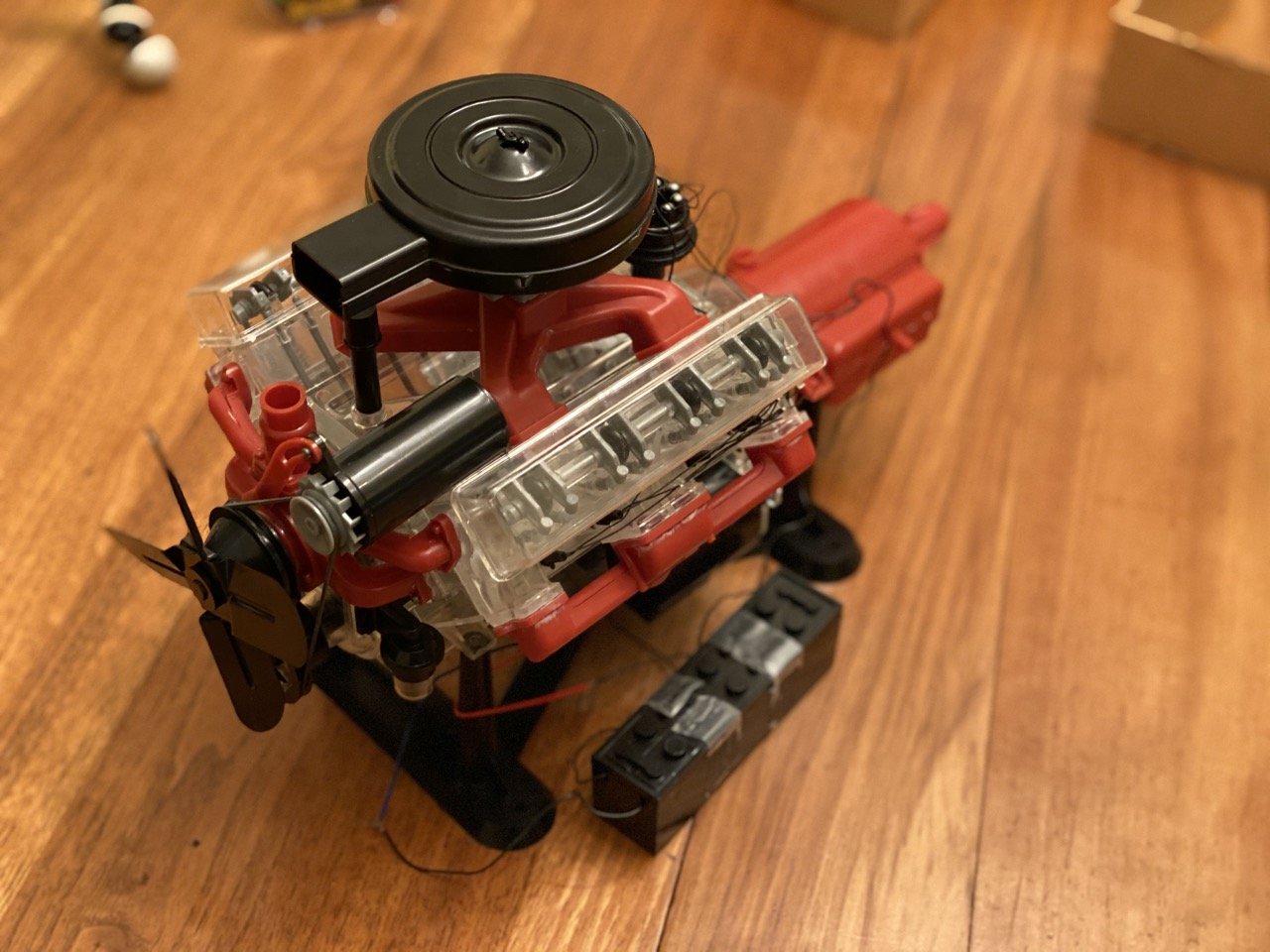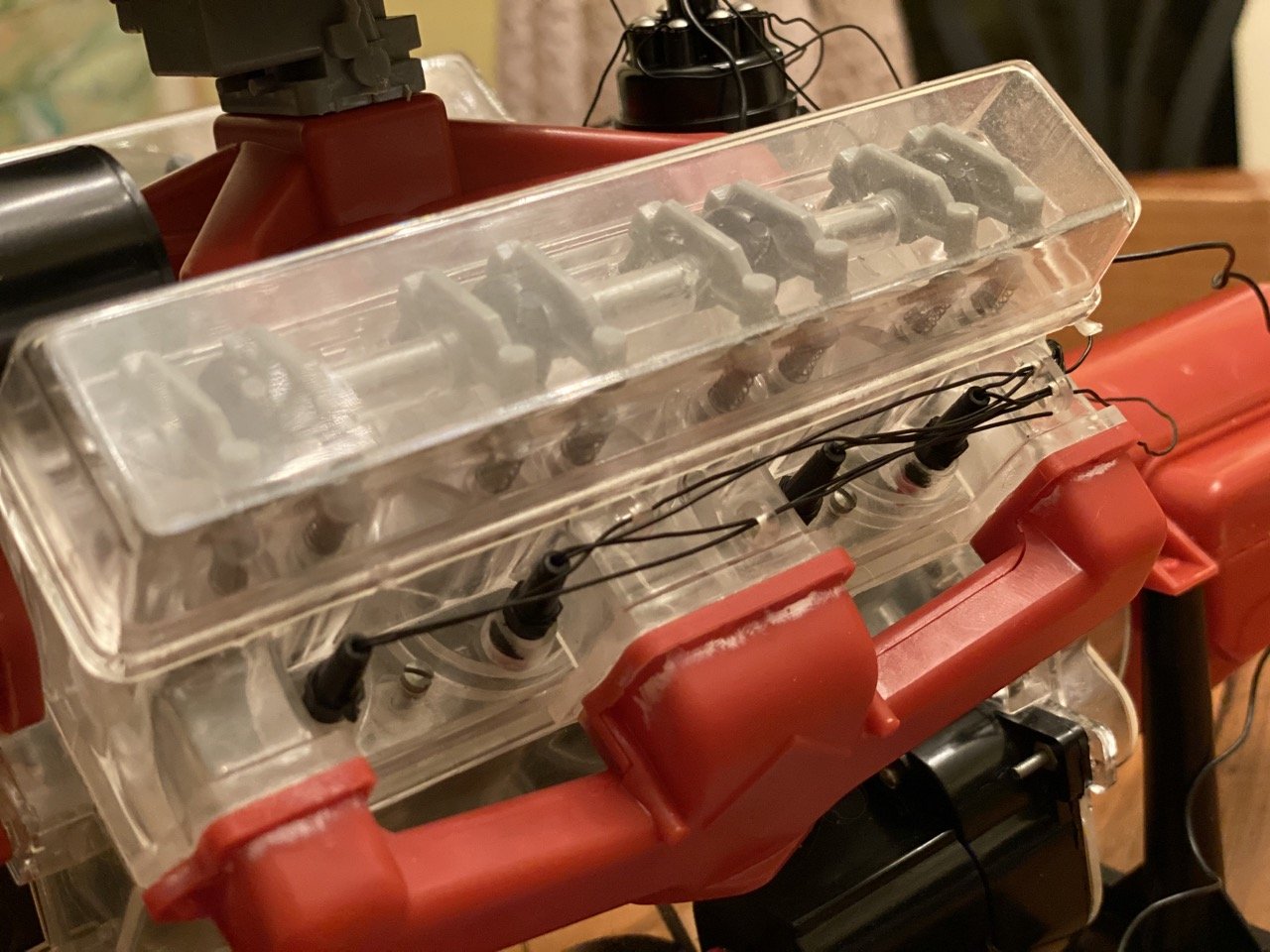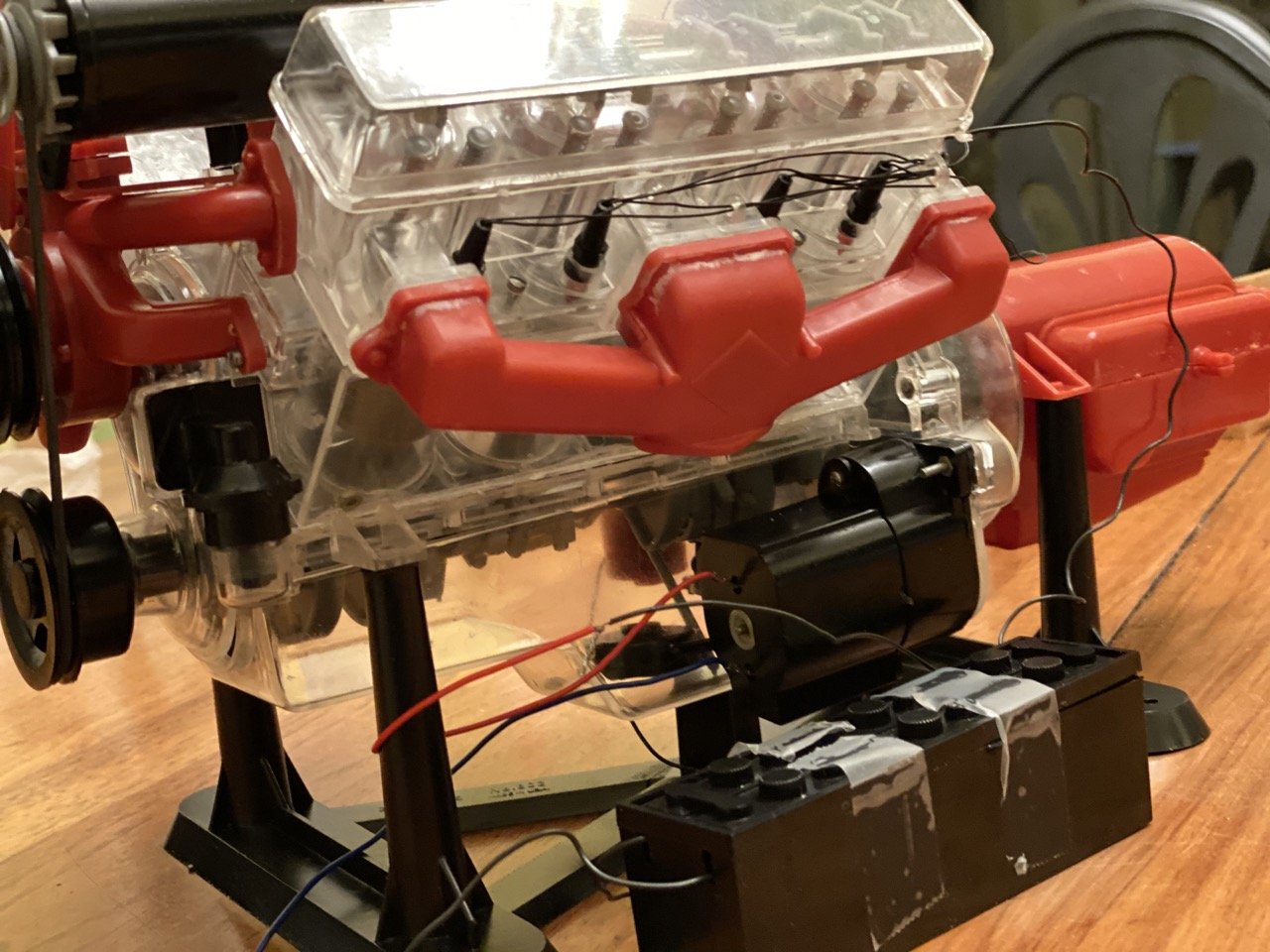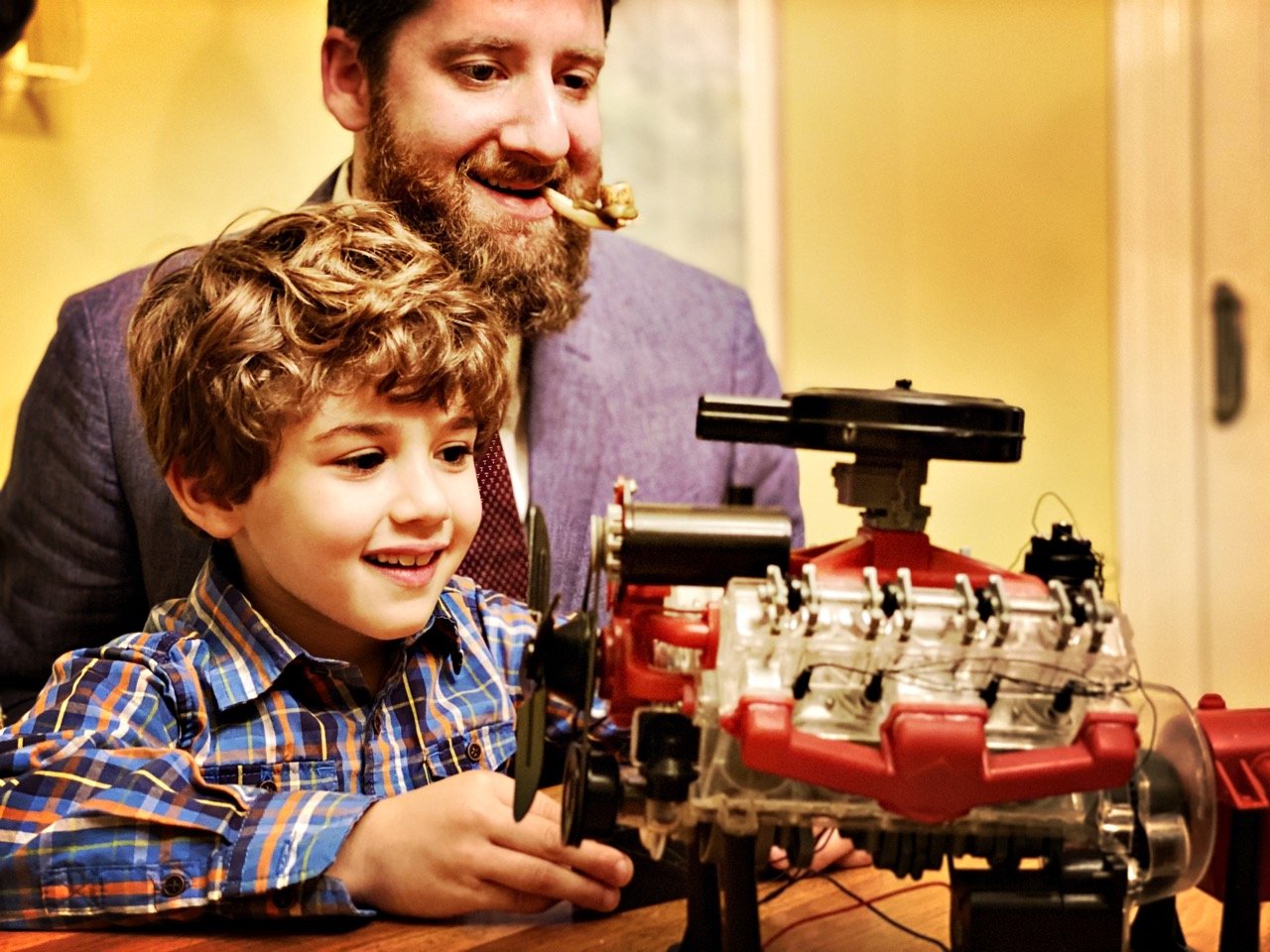How Combustion Engines Work: The Visible V8
I'm not a car guy. I can change a tire and jump-start a battery, but my engine repair skills are nonexistent. My interest in automobile makes and models peaked with middle school games of M.A.S.H. (Lamborghini Countach, Ferrari Testarossa, Porche 911, Stretch Limo. Every. Damn. Time.). So when Jack found this "Visible V8" engine building kit from 1960 in Kate's dad's basement, in near-perfect condition, in July 2020, the dog days of the pandemic…we both figured it'd be a good opportunity to keep busy and learn the basics of how a combustion engine works. Won’t you join us on this journey of frustration and super glue…
This post may contain an affiliate code or link that is no additional cost to you, and I may earn a small commission when a purchase is made.
Learning how a combusion engine works
There are newer versions of the same Visible V-8 model that you can purchase like this or, if you’ve got money to burn, maybe this.
Building this thing from 1960 was both meditative and maddening, and gave me newfound appreciation for the auto experts who diagnose and fix my car.
There’s just so many darn pieces, and they all have to work together. V8 combustion engines are complex ecosystems and merely one (important) piece of a functioning automobile.
If you're like me, and have only a cursory understanding of how engines work, here's a quick breakdown of some major parts and processes:
Parts of a four-stroke combustion engine
ENGINE BLOCK
This is the core of the engine, where the CYLINDERS and PISTONS live. Many engines have four cylinders (typically mounted in a straight line—known, appropriately, as an “in-line engine”). More powerful engines with 6 or 8 pistons are divided into two cylinder banks, arranged in a V-shape (that’s why they call it V6 or V8).
COMBUSTION CHAMBER
The piston moves up and down within its cylinder, forming a COMBUSTION CHAMBER where the magic happens—a coordinated mix of fuel, air and electricity that makes things go vroom.
This movement is broken down into four parts or strokes (that’s why they call it a four-stroke or four-cycle engine).
Each piston fits tightly into its cylinder, forming a kind of vacuum or syringe effect when it moves.
Here are the four strokes:
INTAKE - When the piston moves down, the vacuum suction draws a mixture of air and fuel into the chamber.
COMPRESSION - The piston moves back up, squishing that mix of air and fuel.
POWER - An electrical spark plug fires, igniting the air/fuel mixture. The explosion causes the piston to recoil back downward (which turns the crankshaft, more on that below, one sec).
EXHAUST - The piston moves back up, pushing the byproduct of the used air/fuel mixture out of the chamber.
This four-stroke process repeats within each cylinder, over and over—and happens at slightly different times in all 8 cylinders to spread out the power—many times per second.
As you can see/hear from some of these videos, our final engine purred like a kitten. A diseased, horrifying kitten.
Part of the reason it’s making this terrible sound is that there’s no lubrication on the pistons so they’re screeching against the cylinder walls. In a real engine, there would be MOTOR OIL to lubricate these pistons and make them move smoothly and quietly.
CYLINDER HEAD
This is typically the portion “above” the cylinders where all the valves, ports, and rods do their work.
VALVES are things that open and close at the top of each cylinder in time with the strokes of the engine. Intake air/fuel enters the cylinder through one valve, and then exhaust exits the other side of the cylinder through a different valve.
These valves are opened by PUSH RODS on a valve train, which is like a love train but for valves.
SHAFTS
The push rods are operated by a CAMSHAFT that runs along the length of the engine block and twists around like an axle. This camshaft has irregular ridges or lobes all over it, carefully spaced such that they lift each push rod at a slightly different moment, timed to coincide with the piston strokes.
The camshaft is connected by gears and a timing belt to the CRANKSHAFT, which is what the bottom of all those pistons are connected to. Turning this crankshaft is basically the “goal” of the combustion engine, and the number of times a crankshaft turns or “rotates” each minute is how we get the RPM measurement of the engine’s power.
The crankshaft connects to a geared FLYWHEEL, an energy storage unit explained in this video below. This is attached to either a CLUTCH PLATE (on a car with manual transmission) or a TORQUE CONVERTER (for an automatic transmission). The flywheel helps to even out the power delivery so the engine is producing torque smoothly (as opposed to just getting a single burst of power with every Power stroke).
2-STROKE ENGINES: CHAINSAWS, Weed Trimmers, AND OTHER Lawn IMPLEMENTS
Smaller engines like those found on chainsaws and other lawn care implements are often 2-STROKE ENGINES. Chainsaws typically have a single-cylinder, 2-stroke engine (which makes the engine lighter and the tool easier to carry), while most riding and push mowers are now four-cylinder, four-stroke engines (which are more environmentally friendly, see below).
In a 2-stroke engine, the main difference is that all four processes (intake, compression, power, exhaust) happen in two strokes of the piston (a single up-down movement) instead of four strokes (up-down-up-down).
A two-stroke engine doesn’t have valves that open/close for intake and exhaust. The cylinder itself has openings and a special “transfer,” all very carefully laid out such that the four process can happen more efficiently. Here’s a great video of a cutaway chainsaw engine to explain how this works.
When working with smaller engines like 2-stroke chainsaws or 4-stroke lawn mowers, it’s also important to understand how the carburetor works...
CARBURETORS
CHOKE
The CARBURETOR is the device that regulates and sucks the air/fuel mixture into the engine. Connected to the carburetor are the CHOKE and the THROTTLE, two flaps that control the specific mix of air and fuel that goes to the engine.
When you close off the choke, it limits or completely shuts off the amount of air coming into this mixture, so you’ll have a more gasoline-heavy or “RICH” mixture entering the engine during the intake stroke. When you open up the choke, it makes the mix more “LEAN,” adding more air with the fuel.
FULL CHOKE means the choke is totally closed (think: if my windpipe is being fully choked, I can’t take in any air) so the engine is getting a rich mixture of mostly/all gasoline. To start a “cold” engine (one that hasn’t been used in a while), you usually begin with the full choke setting.
If you’re starting a chainsaw for the first time all day, for instance, you begin with the carburetor in full choke and pull the pull cord a few times. Once you hear a little “burp,” that means the engine has enough fuel and it’s time to move to…
HALF CHOKE opens up the choke a bit to allow some air to mix in the carburetor, though the mix will still be somewhat “rich.” Once the engine has been running for about 30 seconds, the engine is now warm, and you can open the choke to its…
“RUN” SETTING or “OPEN” POSITION. This leans out the air/fuel mixture, so it’s the perfect ratio for a given engine. This is the setting you’ll stay in as you engage the throttle and let the tool do its work.
FYI, if you need any information about "car butter," Jack is all too happy to help...
THROTTLE
So if changing the choke controls the first flap in the carburetor—determining the amount of air we’re allowing in to mix with the fuel—now we get to the other flap, plate, valve (whatever you want to call it) within the carburetor: the THROTTLE.
Changing the position of the Throttle flap determines how much of the air/fuel mixture we’re allowing the engine to intake.
IDLE SETTING is when the throttle flap is nearly closed, almost perpendicular to the carburetor’s Venturi tube (it’s open just enough to allow some air/fuel mix in there to keep the engine’s cyclical process going).
FULL THROTTLE is when the throttle flap is all the way open, parallel to the tube, allowing the maximum amount of air/fuel mix into the engine so it can produce the most power.
IN BETWEEN the idle setting and full throttle are the infinite, minute gradations that allow an engine to produce more or less torque, moving a wheel or chain or motor faster or slower based on giving it more or less gas.
PULL CORD, AKA STARTER ROPE
To start a 2-cycle engine, you’ll likely use a PULL CORD. This essentially sets all the engine processes above in motion, but in reverse order…
This starter rope or pull cord is attached to the FLYWHEEL we discussed above, so pulling the rope starts the flywheel spinning. By spinning this flywheel, you’re basically manually moving the crankshaft that the flywheel is attached to. This crankshaft will get the pistons moving within the cylinder. If everything goes as planned, this will cause the spark plug to fire. This, in turn, ignites the fuel mixture and initiates the first real Power Stroke, causing the piston to recoil. Now, the engine’s 4-part cycle can begin (intake, compression, power, exhaust), repeating over and over again. The engine is now “running” and will continue to repeat its cycle until it runs out of fuel or until you manually shut it off.
CONCLUSIONS
We’re hoping that playing with the Visible V8 is just the first step to understanding more about engines big and small, and learning how to do a few repairs myself in the future. A couple key takeaways from this learning process:
A combustion engine contains MANY different pieces. Lots of different elements can break or otherwise go wrong. They all have to work perfectly and in harmony to create the careful orchestration of chemical, mechanical, and electrical processes that are constantly occurring in a working engine.
The Visible V8 model we played with was from back in the 1960s, and while the basics of an engine today remain the same, a car engine also has to work with dozens of computers and related systems that they never planned for in the 1960s, creating even more complexity. In short, combustion engines need to be serviced relatively often.
For a variety of reasons, gasoline-powered engines, and especially 2-stroke engines, are terrible for the environment. More pollution is created from lawn care tools in California than all of its automobiles, for instance.
In comparison, an electric motor has far fewer moving parts so there’s much less to break or maintain. Changing over to electric and battery-powered lawn tools is a huge priority, and we’ve started making the transition (I’m all in on the Greenworks line of electric power tools). More on that soon…
—> READ THIS NEXT (COMING SOON): TRANSITIONING TO BATTERY-POWERED TOOLS

